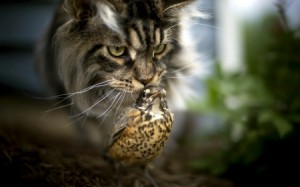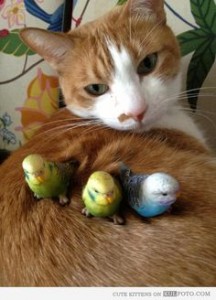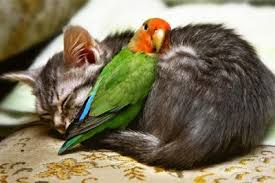The etching of the cat sitting in Eugene Gaujean’s The Two Friends instantly reminded me of Count Fosco’s manipulative and feminine characteristics. The cat is usually associated with femininity, nimbleness, and prowess, and the Count exhibits these traits throughout The Woman in White. For instance, Marian first describes the Count, “fat as he is, and old as he is, his movements are astonishingly light and easy. He is as noiseless in a room as any of us women, and more than that, with all his look of unmistakable power, he is as nervously sensitive as the weakest of us” (Collins 219). Marian’s description of the Count in this passage is quite feminine and feline-like. He moves with silent grace, as a cat does before it attacks its prey, and Marian compares this noiselessness to that of a woman. Although the cat in the etching is small, it upholds a massive presence that mirrors the presence of the Count, whom is fat, but tranquil in nature. Additionally, he encompasses “nervous sensitivity,” which is a phrase usually attributed to women. This sensitivity is another attribute cats express to their owner for affection, and more so to receive food. The Count uses his charisma and sensitivity extensively to manipulate others to give him what he wants.
Another aspect about the cat that resembles the Count’s essence is the way it resides in the portrait. The cat appears to be relaxing and at ease, but its eyes are squinting as though it is keeping watch on the room and the bird, like Count Fosco does in the library with Marian and Laura. This manipulative behavior is exemplified when Marian notes, peering through the library door as she’s leaving to deliver her letters to Fanny, that “[Count Fosco] must have specifically invited [the housekeeper] to see [the canaries]- for she would never have thought of going into the library of her own accord. The man’s slightest actions had a purpose of some kind at the bottom of every one of them. What could be his purpose here?” (308). Marian’s observation makes two inquiries which link Count Fosco to the cat. First, he is permitting the housekeeper’s presence in the library, just like the cat is allowing the bird to perch on the same chair. The cat, like Count Fosco, could snap at any moment and kill the bird. Secondly, Marian questions the Count’s motive, which by this point in the novel the reader expects to be malicious. However, the Count conceals his motives with endearment, and faces each complication in his plan by landing gracefully on his feet like a cat.
(I want to mention and stress that I absolutely LOVE cats and do not believe that they are inherently evil. I just thought the stereotype made a strong correlation to Count Fosco. They do have a sneaky way about them, but I do believe they are wonderful pets.) And now… KITTY PICTURES WITH BIRDIES!! =]



